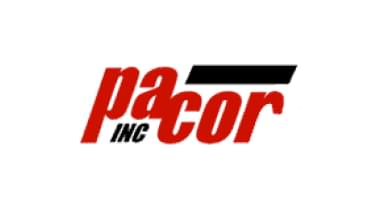Pacor Incorporated
Pacor Incorporated made and distributed asbestos products, including contaminated products manufactured by Johns Manville. Asbestos litigation forced Pacor to file for bankruptcy in 1986. It formed an asbestos trust fund, which became part of the $631 million Manville trust.

Pacor’s History with Asbestos
Pacor Incorporated was founded in 1921 in Philadelphia as the Philadelphia Asbestos Corporation. The company supplied asbestos-containing pads, pipe coverings and insulation products during World War II.
Pacor used asbestos fibers in its products because the fibers are durable and naturally resistant to heat and corrosion.
One of its partners was the Johns Manville Company, which manufactured asbestos roofing materials throughout the 20th century. Pacor was a former distributor of Johns Manville’s asbestos-containing products.
Thousands of asbestos lawsuits have been filed against Pacor for its use of asbestos and its distribution of Johns Manville’s asbestos products.
Development of the Pacor Settlement Trust
Pacor could not handle the financial strain of asbestos litigation and filed for Chapter 11 bankruptcy in 1986.
In 1989, in order to emerge from bankruptcy, the company established the Pacor Settlement Trust.
Due to its association with Johns Manville, Pacor’s trust became part of the Manville Personal Injury Settlement Trust. This trust, initially funded with $2.5 billion in 1988, is administered by the Claims Resolution Management Corporation.
The Johns Manville trust’s current payment percentage is 5.1%. This trust is unique in that it caps attorney fees at 25%.
In January 2022, the trustees extended temporary policies in reponse to the COVID-19 pandemic. For example, electronic signatures will be accepted on all documents and release forms may be signed by a witness instead of requiring notarization.

Gain access to trust funds, grants and other forms of compensation for you or your loved ones.
Get Help NowAsbestos Litigation Involving Pacor
When Pacor filed for bankruptcy, there were 4,200 asbestos lawsuits pending against the company. Pacor settled the majority of these claims out of court.
The company’s bankruptcy proceedings served as a test for jurisdiction over third-party suits against companies seeking Chapter 11 protection.
Higgins v. Pacor Inc.
In the 1984 case of Higgins v. Pacor Inc., John Higgins Jr. filed a civil action against Pacor Incorporated for work-related asbestos exposure, citing Johns Manville’s role as a distributor of Pacor’s asbestos-containing products. The court found that Higgins’ civil suit was not a proceeding “related to” Johns Manville’s bankruptcy. Therefore, the claim could not be moved to the Manville bankruptcy administration.
Under the “Pacor Test,” a claim is related to an underlying bankruptcy case if “the outcome of the proceeding could conceivably have any effect on the estate being administered in bankruptcy.” The Pacor Test is still used today as factor in bankruptcy hearings.
Pacor’s Asbestos Products & Workers at Risk
Pacor fabricated or distributed a variety of asbestos insulation materials including:
- Pacor Asbestos Cloth
- Asbestos Pipe Insulation
- Johns Manville’s Asbestos Products
Pacor employees who helped manufacture asbestos insulation materials faced the highest risk of asbestos exposure. Asbestos exposure from Pacor insulation has the potential to cause lung cancer, asbestosis and mesothelioma cancer among workers who handled their contaminated products.
Pacor’s asbestos-containing products were used in a variety of ways throughout the construction and manufacturing industries. Workers who installed, maintained or removed asbestos insulation made or distributed by Pacor were at risk of asbestos exposure.
It is well documented that Pacor shipped asbestos insulation products to the Philadelphia Naval Shipyard during World War II. At the time, use of asbestos products was mandatory on Navy ships. The shipyard workers who installed and removed these products were placed at risk for inhaling airborne asbestos fibers.
The occupations at risk of working around Pacor’s asbestos insulation include:
- Insulators
- Mechanics
- Pipefitters
- Plumbers
- Roofers
- Tile workers
- Welders
- Construction workers
- Industrial workers
- Metal workers
- Maintenance workers
- Oil refinery workers
- HVAC workers
- Boiler workers
- Shipyard workers
- Veterans of the armed forces
In 2016, Epidemiology and Health published a Swedish study of asbestos-related cancer risks in different occupations. According to the data, former insulators are over 10 times more likely to develop mesothelioma than the general population.
Pacor’s History
Founded in 1921, Pacor was originally called the Philadelphia Asbestos Corporation because it fabricated and distributed asbestos insulation for industrial businesses.
The company offered its services to industrial businesses rather than to the consumer market, providing insulation products to the U.S. military and a wide variety of industries.
During World War II, Pacor provided insulation to the U.S. Navy. By the 1970s, Pacor had provided insulation products and services to more than 100 businesses.
Today, Pacor Incorporated uses asbestos substitutes in the insulation it manufactures for use in the following applications:
- Heat exchangers
- Plastic extruders
- Pumps
- Turbines
- Diesel engines
- Valves
- Joints
- Pipes
The company is also a leader in the manufacture of foam insulation products, such as aerogel pipe wrap insulation products, used in both high-temperature and low-temperature applications.
The company is now headquartered in Cinnaminson, New Jersey, and maintains fabricating divisions in New Jersey, North Carolina and Georgia.
Recommended Reading


